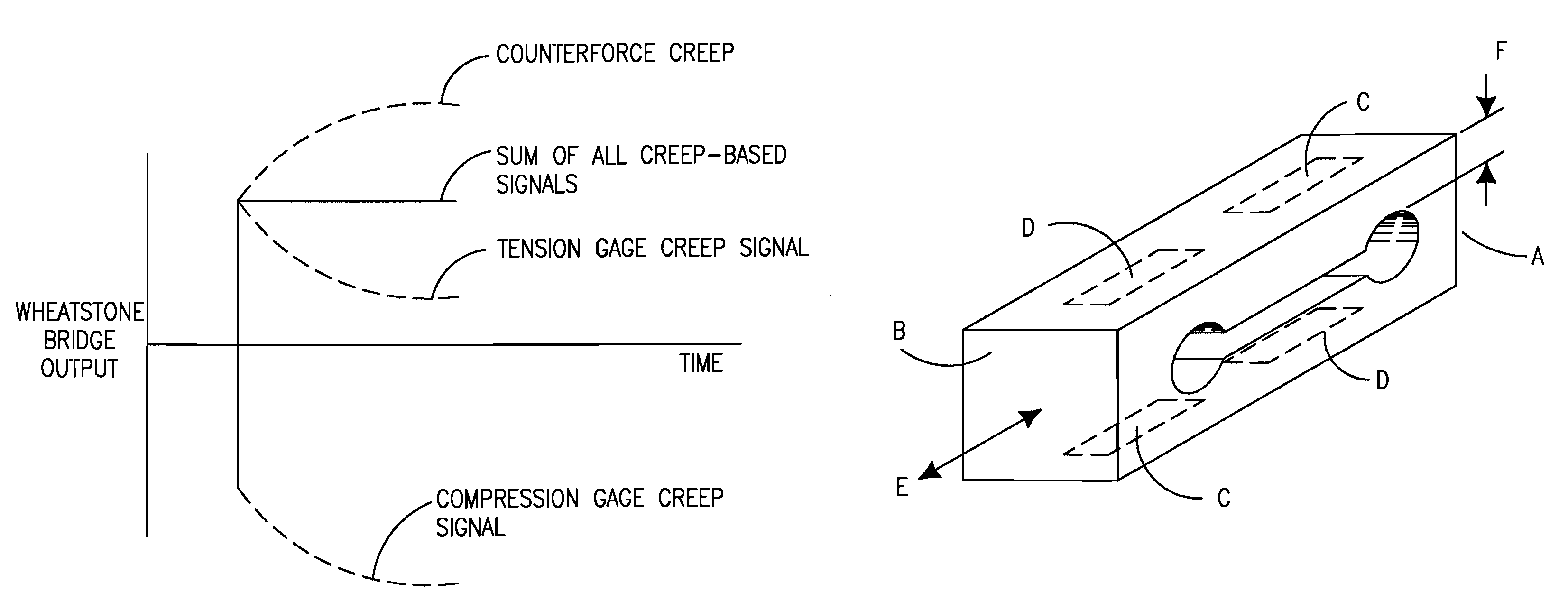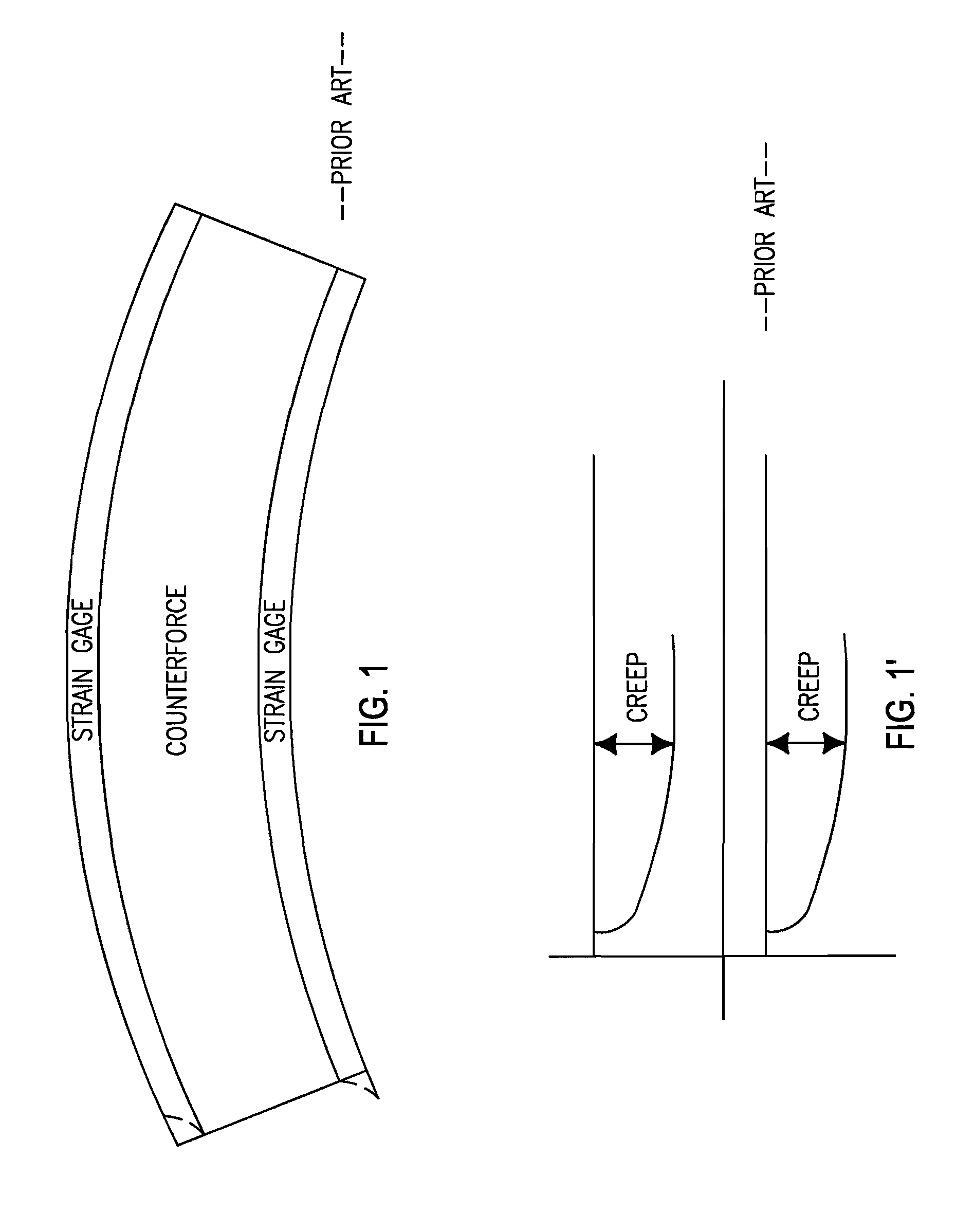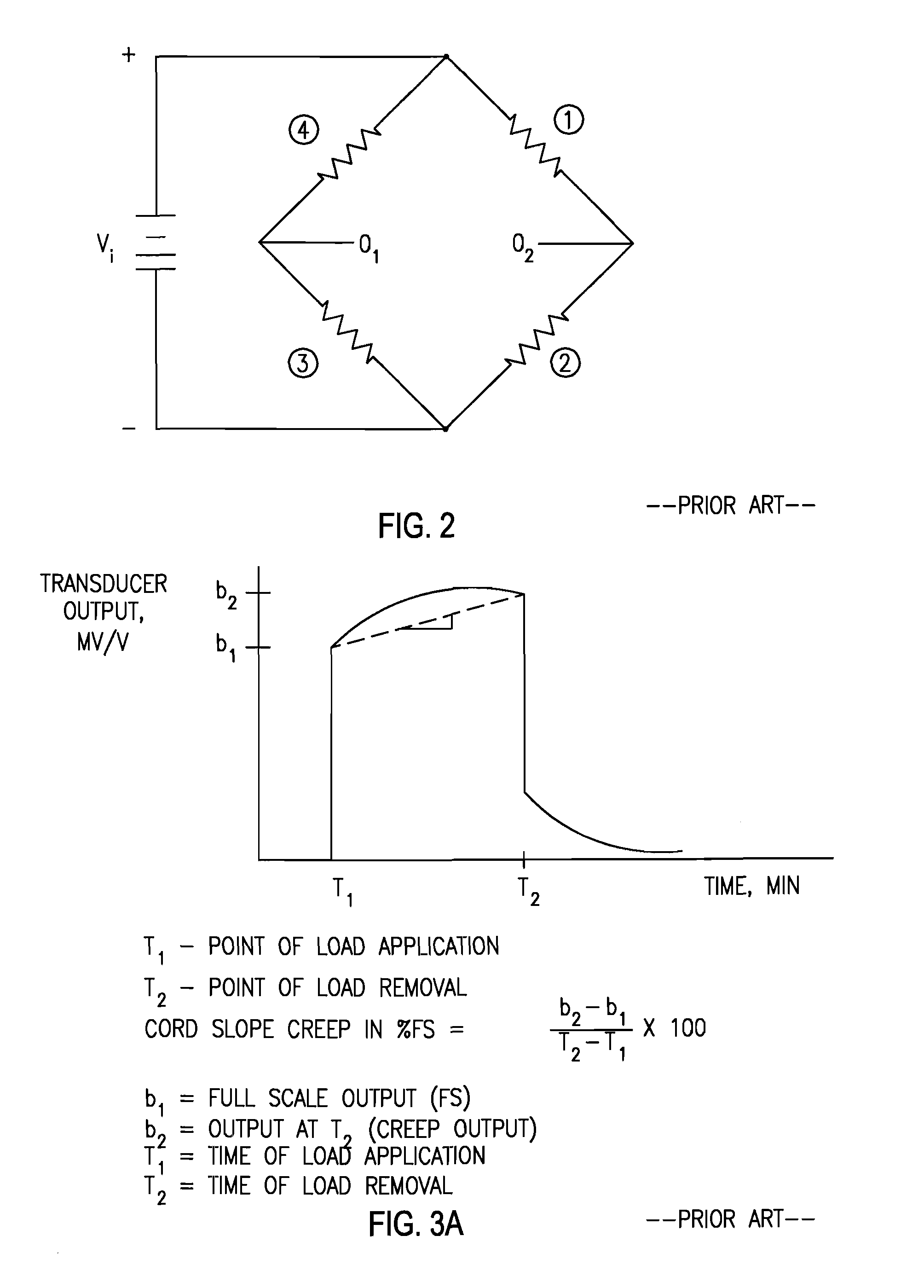Circuit compensation in strain gage based transducers
a transducer and circuit compensation technology, applied in the field of strain gage, can solve the problems of inability to provide any improvement in creep tc performance, its applicability only to mixed-resin backing systems, and more complex and costly strain gage design and production
- Summary
- Abstract
- Description
- Claims
- Application Information
AI Technical Summary
Benefits of technology
Problems solved by technology
Method used
Image
Examples
Embodiment Construction
[0037]FIG. 8 illustrates a binocular transducer counterforce design. The counterforce is fixed at one end, A, and loaded with a deadweight (physical load) on the opposite end, B. The locations indicated by C are areas of tension strain (positive) and the locations indicated by D are areas of compressive strain (negative). Strain gages are normally attached with their major measurement axis (J in FIG. 4) aligned with the major measurement axis E of the counterforce. If it is desired to compensate for other responses of the transducer from weight or environment, the strain gage may be offset slightly (rotated or displaced) from perfect alignment in the direction of E, the disclosed structure remains valid and works well.
[0038]The strain gages are fixed to the counterforce, such as by an adhesive, direct lamination or some other process, and are wired into a Wheatstone bridge circuit as illustrated in FIG. 9b. The only criterion being that the four strain gages are suitably electricall...
PUM
| Property | Measurement | Unit |
|---|---|---|
| temperature | aaaaa | aaaaa |
| temperature | aaaaa | aaaaa |
| creep | aaaaa | aaaaa |
Abstract
Description
Claims
Application Information
 Login to View More
Login to View More - R&D
- Intellectual Property
- Life Sciences
- Materials
- Tech Scout
- Unparalleled Data Quality
- Higher Quality Content
- 60% Fewer Hallucinations
Browse by: Latest US Patents, China's latest patents, Technical Efficacy Thesaurus, Application Domain, Technology Topic, Popular Technical Reports.
© 2025 PatSnap. All rights reserved.Legal|Privacy policy|Modern Slavery Act Transparency Statement|Sitemap|About US| Contact US: help@patsnap.com



